Matson Adjusts Its Sailing Schedule to Increase Whale Safety
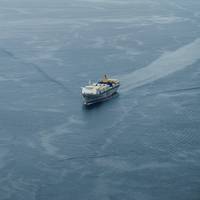
U.S.-based Pacific shipping company Matson announced it has adjusted its sailing routes to help reduce the risk of whale strikes off the coast of California.Shipping channels into and out of San Francisco Bay and the Los Angeles/Long Beach port complex transit federally protected national marine sanctuaries. These sanctuaries –Monterey Bay, Greater Farallones, and Cordell Bank national marine sanctuaries–are destination feeding areas for threatened and endangered humpback and blue whales from late spring through the fall.In 2015…
North American Lobster Industry Confronts 'Ropeless' Traps After Whale Entanglements

An emerging technology to fish for lobsters virtually ropeless to prevent whale entanglements is exciting conservationists, but getting a frigid reception from harvesters worried it will drive them out of business and upend their way of life.Injuries to endangered North Atlantic Right Whales ensnared in fishing gear have fueled a prominent campaign by environmental groups to pressure the industry to adopt on-demand equipment that only suspends ropes in the water briefly before traps are pulled from the water.The Monterey Bay Aquarium’s Seafood Watch…
Freire Shipyard Floats MBARI's New Research Vessel
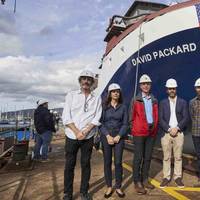
The hull of MBARI’s new flagship research vessel has been floated out at Freire Shipyard in Spain.The new oceanographic vessel, David Packard, which entered the waters of the Vigo estuary for the first time last month, is scheduled for delivery in 2023 to the Monterey Bay Aquarium Research Institute (MBARI), a private, non-profit oceanographic research center in Moss Landing, Calif.“The RV David Packard will be the first state-of-the-art research vessel built not only in Spain…
MBARI to Transfer Research Vessel to Florida Institute of Oceanography
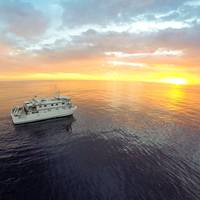
MBARI revealed plans to grant its 25-year-old research vessel Western Flyer to the University of South Florida where the vessel will begin a new life as a sailing classroom for the university's Florida Institute of Oceanography (FIO).“We’re thrilled the Western Flyer will be sailing on to an exciting new chapter at the Florida Institute of Oceanography,” said MBARI President and CEO Chris Scholin. “The ocean plays a vital role in sustaining life on Earth. With the Western Flyer…
MacGregor to Equip MBARI's New Research Vessel
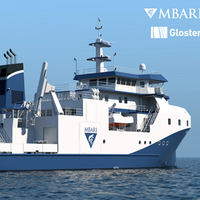
MacGregor, part of Cargotec, said it has been taped to deliver a suite of overboard handling systems for the new oceanographic research vessel David Packard owned by Monterey Bay Aquarium Research Institute (MBARI), a private, nonprofit oceanographic research center based in California. Founded in 1987 by David Packard, MBARI’s mission is to advance marine science and technology to understand a changing ocean. The David Packard is designed by naval architecture firm Glosten, and is currently under construction at Freire Shipyard in Vigo…
Academia’s Climate Change Challenge is Far from Academic
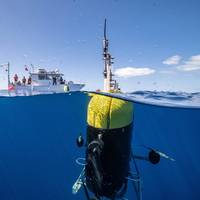
Highlighted in Marine Technology Reporter's MTR100 is the work and technology ongoing in the halls of academia. The most recent report released by the UN Intergovernmental Panel on Climate Change emphasized our warming planet, an expected announcement for many in the scientific community. Faced with the confirmation that human activities have caused an increase in global temperatures, research has turned to seeking answers in the planet’s natural systems. How does each part of the global carbon cycle work and how may it be impacted by the changing climate?
ABB to Equip MBARI’s New Research Vessel
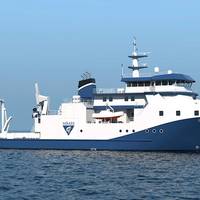
ABB said it will supply power integration technology to support operations on a new research vessel being built for the MBARI (Monterey Bay Aquarium Research Institute) at Freire Shipyard in Vigo, Spain.Earlier this year, MBARI, located in Moss Landing, Calif., announced construction of a new state-of-the-art research vessel designed by Seattle-based Glosten and named in honor of its founder, David Packard. The 50-meter vessel is scheduled to be delivered in 2023.R/V David Packard will feature a wide scope of ABB’s electric…
Glosten to Design, Freire Shipyard to Build MBARI's New Research Vessel
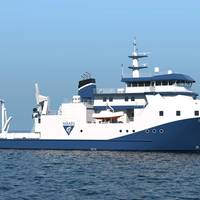
The Monterey Bay Aquarium Research Institute (MBARI) is embarking on a new chapter in its ocean research with the construction of a state-of-the-art ship, a vessel named in honor of MBARI’s founder, David Packard. The R/V David Packard will be capable of accommodating diverse expeditions in Monterey Bay and beyond to further the institute’s mission to explore and understand our changing ocean.It will measure 50 x 12.8 m with a 3.7 m draft, designed to support a crew of 12, plus a science crew of 18.
Environmental DNA Emerging in the Ocean Science Community
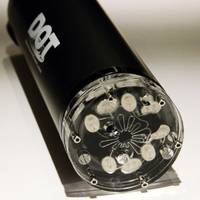
There is a new buzzword in the ocean science/sensing community. The word is eDNA, an abbreviation for environmental DNA. This refers to DNA that can be extracted from environmental samples without first isolating any target organisms. In the maritime community such samples are taken from water. All living organisms leave traces of DNA in their environments which is an indicator of their presence over time. This DNA is released into the environment through the biological process of living animals or by the decomposition of dead organisms.
MBARI Works at Unlocking Ocean Biology
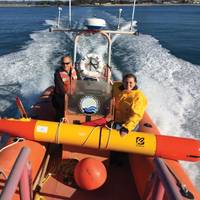
Greater understanding of what goes on in the ocean is starting to become a reality – thanks to growing use of unmanned surface and underwater vehicles and developments in biological sensing. Elaine Maslin takes a look at what a team at MBARI has been doing.Gathering biological data from the oceans remains a significant challenge for oceanographers. Now, an increasing range of unmanned vehicles that are able to work together is becoming available, as is an ability to collect biological data using them.It sounds straight forward…
LRAUV: Arctic Oil-Spill-Mapping Robot Put to the Test
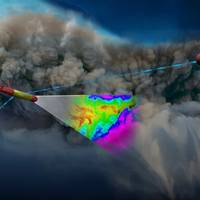
As commercial shipping and energy activities picks up in the Arctic region, the prospect of accidental oil spills in this pristine environment remain a concern. In response, the U.S. Department of Homeland Security (DHS) is taking the lead – through the U.S. Coast Guard – to develop a subsea robotic system to map and report on spills.“Because of ice coverage and the tyranny of distance, it is difficult to get resources and assets up in the Arctic in a quick manner,” said Kirsten Trego, Executive Director of the Coast Guard’s Interagency Coordinating Committee on Oil Pollution Research.
'Smart Boulders' Measure Seafloor Avalanches
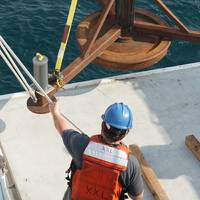
Researchers have deployed high-tech robotic sensors disguised as boulders for the first time to measure the initiation and evolution of the huge, hard-to-measure seafloor avalanches that regularly damage global networks of seafloor telecommunication cables.The so-called "smart boulders" revealed some surprising findings that will help inform where best to lay the seafloor cables that keep the internet running. Published this week in the journal Nature Communications, this research shows that submarine avalanches of rock and sand…
Shipping Companies Recognized for Efforts to Save Whales
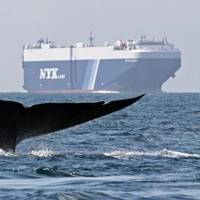
NOAA presented awards to 13 global shipping firms for their commitment in helping prevent ship collisions with whales off the coast of California.The companies participated in a Voluntary Speed Reduction initiative by slowing their ships to speeds of 10 knots (about 11.5 mph) or lower while transiting vessel traffic lanes outside the Golden Gate during whale feeding season, from May through mid-November.The national marine sanctuaries of North-central California - Greater Farallones…
Fishing Vessel Runs Aground near Santa Cruz
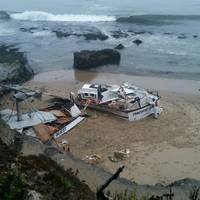
Responders are working to remove fuel from the tanks of a 56-foot commercial fishing vessel that ran aground near California’s Monterey Bay National Marine Sanctuary on Sunday.The grounded vessel, Pacific Quest, is broken up and beached near Seymour Marine Discovery Center in Santa Cruz., with a maximum potential capacity of 1,200 gallons of diesel on board, according to the U.S. Coast Guard.The captain of the fishing vessel contacted Coast Guard Sector San Francisco watchstanders at approximately 2 a.m. Sunday, reporting that his vessel ran aground with only himself and his dog aboard.
Ten Institutes Join the Nereus Program
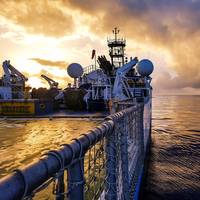
Ten new research institutes from Europe, North America and Australia have joined the Nereus Program research partnership, bringing the total to 17. Launched in September 2011, the program is an international collaboration between The Nippon Foundation and the University of British Columbia with the aim to make comprehensive forecasts of the ocean’s future, the program has grown into one of the world’s largest research initiatives in its field. Principle investigators from eight…
CARB Powers Clean Air in California
California Commercial Marine Operators Take Advantage of Grant Money to Repower with Eco-Friendly Engines. Capt. Joe Nazar recently repowered his whale watching excursion vessel in San Francisco with twin Volvo Penta Tier 3 diesels, and he couldn’t be happier with the results. Since the new engines were installed, he is seeing dramatic improvements in fuel efficiency, lower emissions, reduced noise levels and better performance. He has another good reason to be happy. A large percentage of the cost of repowering the boat came from a State of California grant. Nazar’s 64-ft. catamaran, Kitty Kat, was retrofitted with a pair of Volvo Penta D11 625 hp Tier 3 engines in April, replacing the previous 12-liter Tier 2 engines.
New Vessel Aims to Transform the Fishing Industry
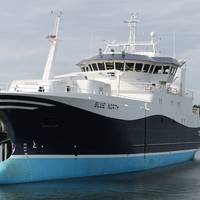
Seattle-based company Blue North has christened F/V Blue North, a state-of-the-art vessel designed to transform the fishing industry by improving conditions for workers, reducing environmental impact and harvesting seafood more humanely. Designed with sustainability in mind, the new longliner is geared specifically for the Alaskan cod fishery, built by Dakota Creek Industries, Inc. of Anacortes, Wash. from a design (ST-155L) by Norwegian firm Skipsteknisk AS. The new fish harvesting vessel…
NOAA, NASA & BOEM to Monitor Biodiversity
NOAA, NASA and the Department of the Interior's Bureau of Ocean Energy Management (BOEM) have joined together to support three demonstration projects that will lay the foundation for the first national network to monitor marine biodiversity at scales ranging from microbes to whales. The projects, to be funded at approximately $17 million over the next five years, subject to the availability of funds, will demonstrate how a national operational marine biodiversity observation network could be developed. Such a network would serve as a marine resource management tool to conserve existing biodiversity and enhance U.S. biosecurity against threats such as invasive species and infectious agents.
British Rower Resucued After Four Days
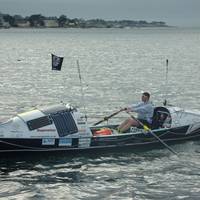
British solo rower, Daryl Farmer, who was taking part in the Great Pacific Race rowing from California to Hawaii, was forced to call for assistance four days after his start, having become dangerously dehydrated from sea sickness. Support boat OPA located Farmer and took him and his boat, ‘Bojangles’ (Bo), under tow on Saturday June 21 approximately 20nm off the coast of California. Heavy seas and high winds unfortunately snapped both ropes, leading to a man overboard situation for one of OPA’s crew.
Shipping Lanes Re-routed off California Coast
Effective June 1, 2013, West Coast shipping lanes are being adjusted to protect endangered whales, & OceanGrafix's new charts incorporate those changes. OceanGrafix, the first and only company to offer NOAA print-on-demand nautical charts, today announced the availability of updated nautical charts that reflect imminent changes to shipping lanes. Effective June 1, 2013, the International Maritime Organization (IMO) is amending vessel traffic separation schemes in an effort to enhance navigational safety and to protect endangered whales. The IMO adjustments to shipping lanes, which are backed by National Oceanic & Atmospheric Administration (NOAA) research…
Deep Ocean Trash Dump Located
Researchers at the Monterey Bay Aquarium Research Institute (MBARI) find that trash is not only cluttering beaches, but is accumulating deep sea, notably in the Monterey Canyon. Surprisingly large amounts of discarded trash end up in the ocean. Plastic bags, aluminum cans, and fishing debris not only clutter our beaches, but accumulate in open-ocean areas such as the 'Great Pacific Garbage Patch' reports ScienceDaily. In total, the researchers counted over 1,500 observations of deep-sea debris, at dive sites from Vancouver Island to the Gulf of California, and as far west as the Hawaiian Islands. In the recent paper, the researchers focused on seafloor debris in and around Monterey Bay -- an area in which MBARI conducts over 200 research dives a year.
R/Vs at Bay Ship & Yacht
The yard-crew at Bay Ship & Yacht shipyard, located on San Francisco Bay in the island City of Alameda, carefully rolled the cradled RV New Horizon from its work station, along the rails to the yard’s new 1200-ton Syncrolift, which lowers the vessel into the estuary that separates Alameda from Oakland. The 170 x 36 ft. vessel had undergone several weeks of underwater hull and machinery repairs at the yard. Once back in the water, she headed to her home port at the University of California’s Scripps Institution of Oceanography in San Diego to join the three other vessels of the research fleet. Other R/Vs that have been dry-docked recently at Bay Ship & Yacht include.
The Monterey Bay - A Leader in the Blue Economy
California’s blue economy is a +$50 billion industry. Today, marine science and the blue economy directly affect various business and government sectors such as offshore oil and gas production, national defense, seafloor exploration, communications, agriculture production, renewable energy, weather forecasting and fisheries to name a few. On April 25 at the Monterey College of Law in Seaside, Ca. Congressman Sam Farr will join more than 20 marine science and trade promotion service experts as presenters and panelists at The Monterey Bay - a Leader in the Blue Economy event as part of the Brand Monterey Bay program. This conference is designed as an introduction and brief glimpse of the world leading marine science community of the Monterey Bay region.





